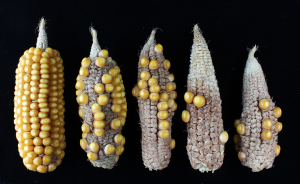|
Member News
United Sorghum Checkoff news release
LUBBOCK, Texas The United Sorghum Checkoff Program launched its first Farm-to-School Curriculum, an agricultural education initiative that aims to integrate the science and production of sorghum, in addition to its nutritional value, into classrooms across the United States.
"We are thrilled to provide teachers with comprehensive materials that incorporate various aspects of sorghum into subjects from STEM to Language Arts," Sorghum Checkoff Director of Food Innovations & Institutional Markets, Lanier Dabruzzi MS, RD, LD said. "This initiative underscores our commitment to agriculture education and our goal to inspire the next generation to recognize and utilize the potential of sorghum in their lives and the world around them."
The curriculum provides educators with an array of engaging resources that introduce students to the importance of sorghum as a sustainable, versatile and flavorful grain that can be enjoyed in a variety of ways. The program also aims to ignite the passion for agriculture in the next generation, cultivating an understanding and appreciation for sorghum.
"The focus on Farm-to-School is an exciting addition to our educational outreach," Sorghum Checkoff Executive Director, Norma Ritz Johnson said. "It serves as a remarkable resource for teachers, providing lesson plans and activities that conform to National Science and Common Core State Standards.
We believe this curriculum will not only spark students' interest in sorghum, but also inspire them to explore careers in agriculture. By introducing children to sorghum and its multitude of benefits early in their developmental years, we hope to cultivate a long-lasting appreciation for this crop. This early exposure aims to foster a new generation of consumers who are well-informed about the source of their food and cultivate a love for sorghum-based foods."
The Sorghum Farm-to-School curriculum engages students of all grade levels, from Kindergarten to 12th grade, through experiential learning. Tailored modules for elementary, middle, and high school students offer rich, multisensory experiences. Students not only grow and taste sorghum, but they also explore various subjects by writing about and applying their knowledge of this versatile grain.
These learning experiences cover a wide spectrum of educational content, from understanding sorghum's crucial role in global food security and world nutrition, to exploring its potential as a renewable energy source.
The program is further enriched with an interactive video, promoting an engaging and comprehensive learning environment.
Find tailored curriculum content and activities for Kindergarten to 12th grade students by exploring SorghumCheckoff.com/educators.
Free Download of Guidelines for the establishment and management of seed testing laboratories. This is an interesting and well put-together document you may want to take a look at and keep for your files.
ASTA continues its partnership with Purdue University’s Center for Food and Agricultural Business to host the 2023 ASTA Management Academy August 15-17, 2023 in West Lafayette, IN. Participants will explore fundamental marketing strategies and the changing agribusiness environment as well as identify and apply management tools to examine profitability.
“Today’s seed industry has proven to be a challenging and disruptive environment in terms of technology changes, the continuous quest for efficiency, and increasing consumer demands,” said Scott Downey, center director and professor of agricultural economics. “The program will provide a great opportunity for seed industry professionals to sharpen their management toolkit, address challenges and take a hard look at their strategy for future success.”
For more information or to register, view the academy webpage.
We regularly receive thank-you letters from scholarship awardees as a result of your generous gifts to the TSTA Foundation. Here are a few recently received from Tarleton State University.
|
 Non-stressed corn, at left, compared to corn that was heat stressed at different stages of pollen development. (credit: Kevin Begcy, UF/IFAS)
Non-stressed corn, at left, compared to corn that was heat stressed at different stages of pollen development. (credit: Kevin Begcy, UF/IFAS)











